The wheels on your bike literally keep you moving and as your only contact point to the ground, will have a considerable impact on your ride quality. Sure the drivetrain will push you along, and the frame will also have a significant impact on ride quality, but the wheels are the first element of the bike to feel road vibration, terrain, changes in profile and most importantly, transfers your effort on the bike to an outcome on the road. Matching the right wheels for your riding style is important, as is having a reliable set that still offer good levels of performance.
Upgrading a bike's wheels is a popular decision thanks to the performance and ride benefits they offer. Upgrading your wheels can achieve faster speeds, better handling, aerodynamic benefits, reduced weight, better durability and improved overall ride quality.
But before you go shelling out for a shinny new set of wheels, read this buyer's guide where we take you through everything you need to know about road bike wheels.
Anatomy of a wheel
A wheel consists of four main components which will influence it's weight, performance and durability. Upgrading (or downgrading) these components can effect the ride quality, your average speed and braking performance so it's worth knowing a little about each, and how that relates to improved performance on the road.
Rim: The wheel's rim sits on the outside of the wheel and has two main functions; to hold the tyre and provide a braking surface (for rim-brake bikes, not disc-equipped bikes). The rim width will effect the tyre width which could have a significant impact on rider comfort, and the material of braking surface will significantly impact braking performance.
Hub: The hub sits at the centre and provides the axis of rotation. Within each hub, front and back, is the axle which attaches the wheel to the bike. On the rear wheel the hub features splines which a cassette attaches to. The bike's chain wraps around the sprockets of the cassette, and in association with the crankset and shifters, forms the bikes drivetrain which propels it forward. As well as propelling the bike forward, all road bike wheels (excluding fixed-wheel bikes) will use a rear hub with a 'freehub' mechanism which allows the bike to coast.
Spokes: Material that connects the hub and rim. The number of spokes will vary between front and rear wheels, the rear often featuring more spokes to improve strength and stiffness. More spokes typically means a stronger wheel but that comes with a weight penalty. Spokes are made from varying materials and come in different shapes to either optimize strength or improve aerodynamics, sometimes both. Most commonly spokes are made with steel wire, but can vary greatly in shape and diameter.
Nipples: Spokes attach to the wheel via a special nut called a 'nipple'. Nipples are important for adjusting spoke tension which will 'true' a wheel, making it straight when spun.
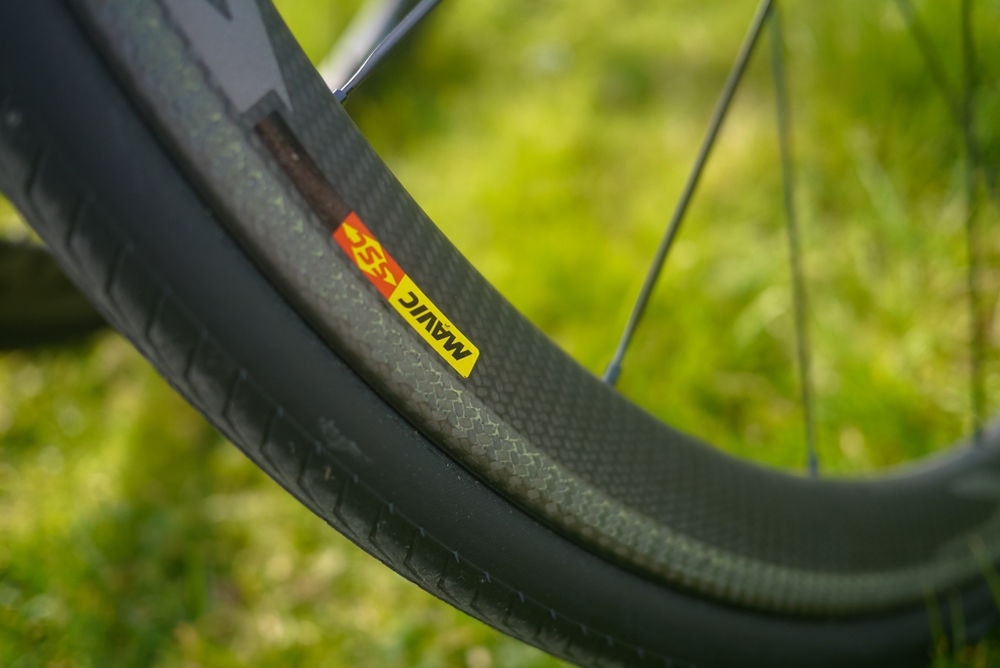
What makes a good wheel
A good set of wheels will be durable, have dependable hubs, provide confidence inspiring braking, be stiff for power transfer, and also lightweight.
Choosing a good wheel will depend largely on it's intended purpose as it's very hard for a wheel to deliver on all the above characteristics. Some wheels will focus on keeping weight down making them suited to climbing or all round riding, others will focus on strength and durability perfect for touring or all-road riding, while others are purpose built for fast racing, optimising aerodynamics and stiffness.
Lightweight wheels keep rotating weight down by having a shallow rim and low spoke count. As well as reducing overall weight, a fringe benefit of this is comfort. Deeper wheels are fast but the ride quality is often described as 'harsh', conversely lightweight wheels often provide good levels of compliance. Quality lightweight wheelsets will typically be below 1,400 grams, some extremely light weight wheelsets coming in under 1,000grams for the pair!
Aerodynamic wheels aim to be as fast as possible by reducing drag. Aerodynamic wheels are typically greater than 40mm deep at the rim and are becoming wider as well. This speed does come at a cost with deep-section wheels more susceptible to cross winds which can make them difficult to handle, and the extra material does add weight.
Wheelsets not so focused on performance commonly have features which make them more appropriate for everyday use or general training. The braking surface is aluminium providing better performance in all weather conditions when compared to carbon, higher spoke counts are used to aid strength, and rim width is wider to cater for larger tyres. As a result of these features, weight is increased, 1,500 - 1,800 grams is a common range for quality wheelsets in this form. Wheelsets designed for loaded touring or to withstand regular use under heavier riders (120kg +) are typically hand built with spoke counts of 32 or even 36 spokes, expect these to weigh over 1,900 grams.
Rim material
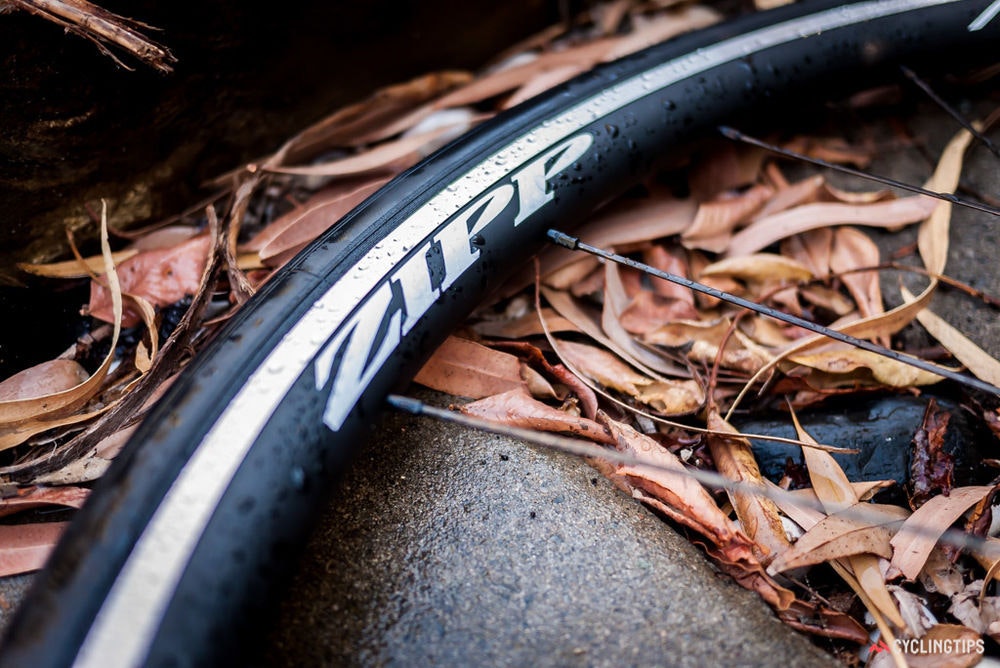
Most entry to intermediate level wheels will feature aluminium rims of varying quality, while high level wheels will typically feature rims made of carbon fiber which reduces the weight while increasing the stiffness and speed.
Aluminium as a rim material provides better braking performance than carbon fiber, which tends to perform poorly in the wet and on long descents as heat builds up under braking. Based on this, some brands offer aluminium braking surfaces with their carbon rims, however, these designs are typically heavier than a single-material rim.
Braking: Rim or disc
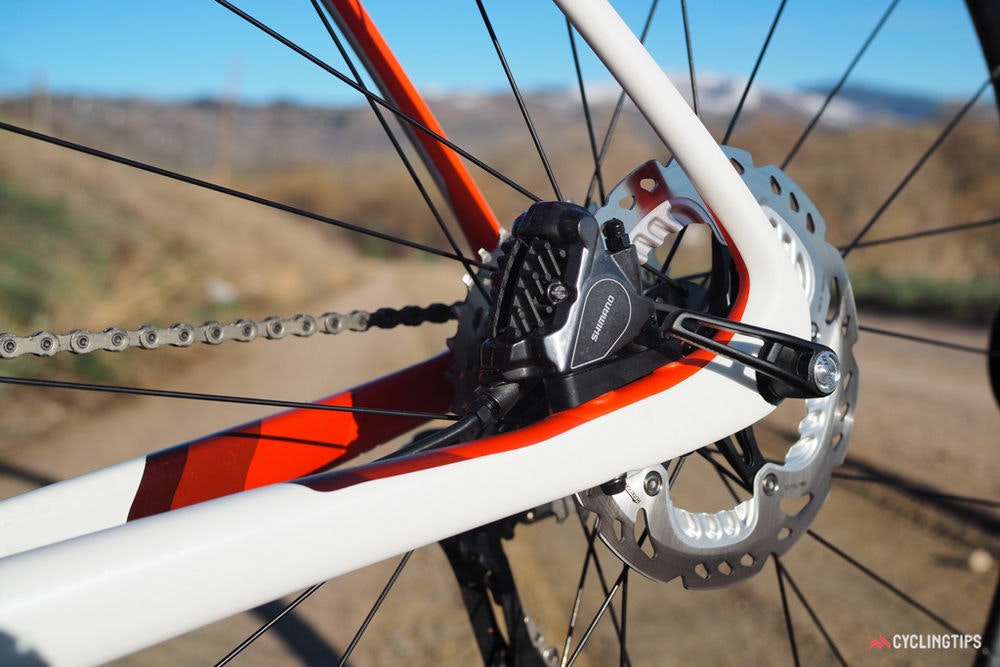
The shift has well and truly begun to disc brakes becoming a new norm on road bikes. Moving away from rim and conventional caliper braking affords manufacturers some experimentation when it comes to both frame and wheel design.
Wheelsets that use disc brakes don't need to have a brake track or confirm to a specific width in order to fit into tight fork and frame clearances. As a result, wheelsets for disc equipped bikes can have a modified profile to improve aerodynamics and performance. The drawback is that wheelsets for disc equipped bikes will have to be stronger to contend with the additional braking forces, meaning more spokes and specific hubs, which could potentially offset any weight saving or other performance gains. However, weight saved at the outside of the wheel (rim) has a far more noticeable impact on how light it rides than weight closer to the hub.
A huge benefit is the performance of carbon wheels, which traditionally have poor braking when compared to wheels with an aluminium brake track. Disc brakes will allow for the performance benefits of carbon wheels to be maintained (or improved upon) without reducing the braking performance.
Wheels designed for use with disc brakes should not be confused with aerodynamic 'disc' wheels which form a single piece from hub to rim in the effort to reduce wind turbulence in time trial racing events.
Wheel dimensions: width and deep
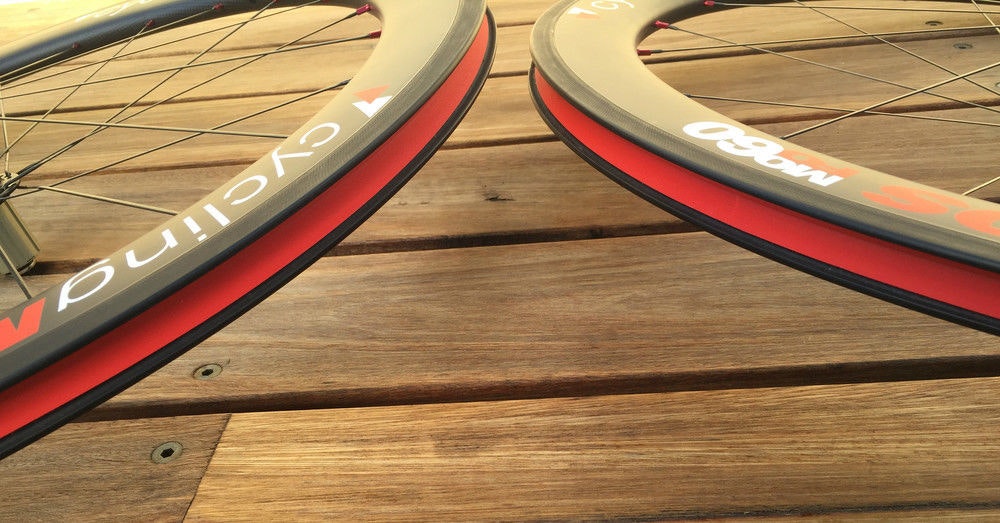
A wheel's rim width and deep will largely dictate how it rides and feels.
The trend is for modern rims to be wider, resulting in better aerodynamics and improved comfort through greater tyre air volume. This coincides with the shift to larger tyres that are said to improve (lower) rolling resistance as well as comfort by running at a lower pressure.
Rim width can either be measured internally or externally, which potentially provides some confusing numbers. Typically, if a brand refers to a number followed by a ‘C’, this is an internal measurement. By current standards, a narrow road rim when measured internally is anything under 15mm, while a wide rim is anything measured internally greater than 17mm. When measuring externally, anything under 19mm is considered narrow while anything over 22mm can be considered wide.
While closely interrelated, the external rim width will mostly influence the wheels aerodynamics, while the internal rim width will influence comfort, rolling efficiency or tyre shape.
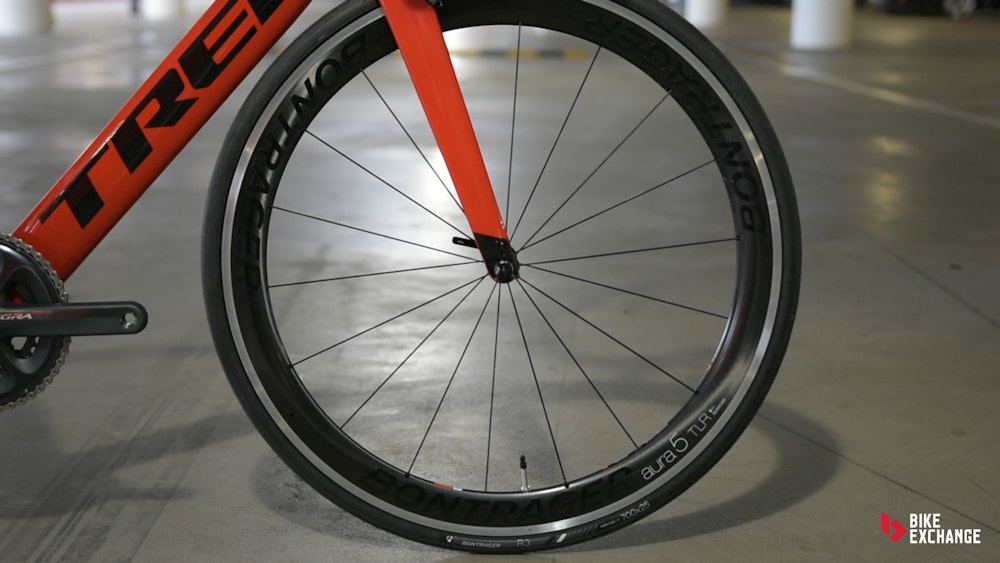
The depth of the rim will affect the aerodynamics of the wheel and the handling of a bike. Generally the deeper the rim, the more aerodynamic, but also the harder to handle given they will be more affected by side wind than a shallow rim. The extra material required will also create a harsher ride, not offering as much compliance as a shallower wheel. It's worth noting that not all deep rims are created equally, and the exact profile varies greatly between brands. The best options manage to achieve fast speeds while being well controlled in cross winds.
Deep-section wheels will typically measure at least 40mm from the rim to the nipple, some extending to over 80mm.
Spokes
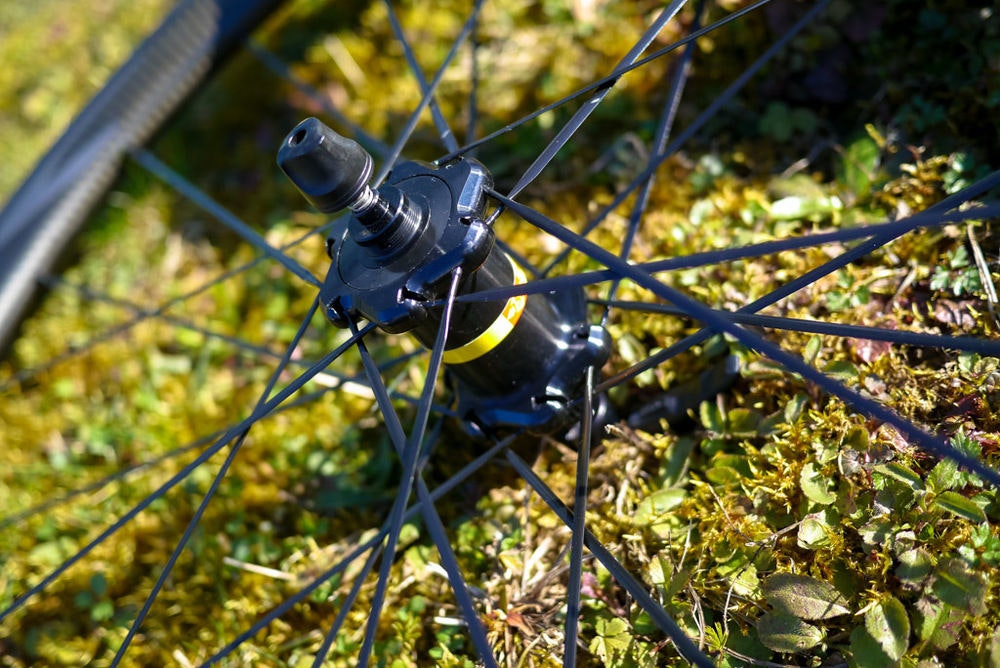
The total number, shape and material of the spokes on a wheel will vary. High spoke counts (having a lot of spokes) increase the robustness and durability but come with a weight penalty. Spokes come in a variety of materials, including steel, aluminium, carbon fiber or titanium. Steel spokes are by far the most common.
The spoke count of front and rear wheels will vary, rear wheels having more spokes as more forces are applied. Typically a lightweight front wheel will have between 18-24 spokes, while the rear wheel will have between 20-28 spokes. This is in stark contrast to the early days of wheel building when front wheels would have over 30 spokes, and rear wheels would have over 40. As materials and manufacturing processes have improved, spokes counts have gone down, reducing weight without compromising performance.
A flat spoke, sometimes referred to as a 'bladed spoke', can provide some small aerodynamic gains over a rounded one. Although more expensive, these bladed spokes also help to reduce weight without sacrificing strength.
Normal spokes are either 'straight pull' or 'J-bend'. 'Straight pull' spokes have no bend and require specific hubs, 'J-bend' spokes are the more traditional option, featuring a 90 degree bend at the hub end which looks like a 'J'.
Benefits of the straight pull spokes are; more precise alignment, stiffer, more responsive wheel, and a decrease in weight. The drawback of straight pull spokes is that many companies make proprietary spokes and hubs which means sourcing a replacement spoke can be time consuming and potentially expensive. J-bend spokes are easier to replace and perform close to straight pull spokes in terms of quality and strength.
Butting or 'butted' is term you'll come across if looking at round spokes. Simply put, butting is the process of varying the thickness, and so a double butted spoke would offer two different diameters along its length. Butted spokes are typically stronger and more durable than 'straight gauge (one diameter) spokes as they help dissipate stress fatigue better.
Freehub
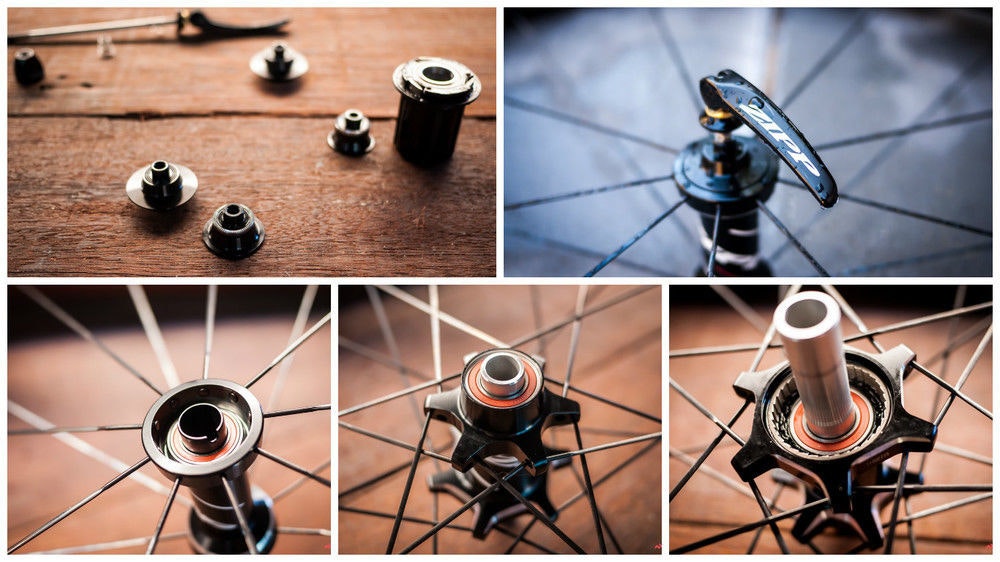
The freehub is found on the rear wheel hub and performs two functions: to drive the rear wheel and allow it to coast. A fixed hub also drives the rear wheel but doesn't have the ability to coast, requiring you to pedal the whole time the bike is moving.
Manufacturers have different freehubs so be sure to check your gears are compatible. Shimano and Campagnolo freehubs both use a spline system to connect the cassette to the freehub, but the diameter and spline-type differs, meaning they are not compatible. SRAM cassettes will work with Shimano freehubs, but not with Campagnolo.
The majority of new wheels being sold are 11-speed compatible which feature a wider freehub body to handle the wider spacing of 11-speed cassettes. With the simple use of a washer, these are backwards compatible with 8, 9 and 10-speed cassettes too. However, older 8, 9 or 10-speed hubs cannot fit an 11-speed cassette (except Campagnolo wheels/cassettes).
Bearings
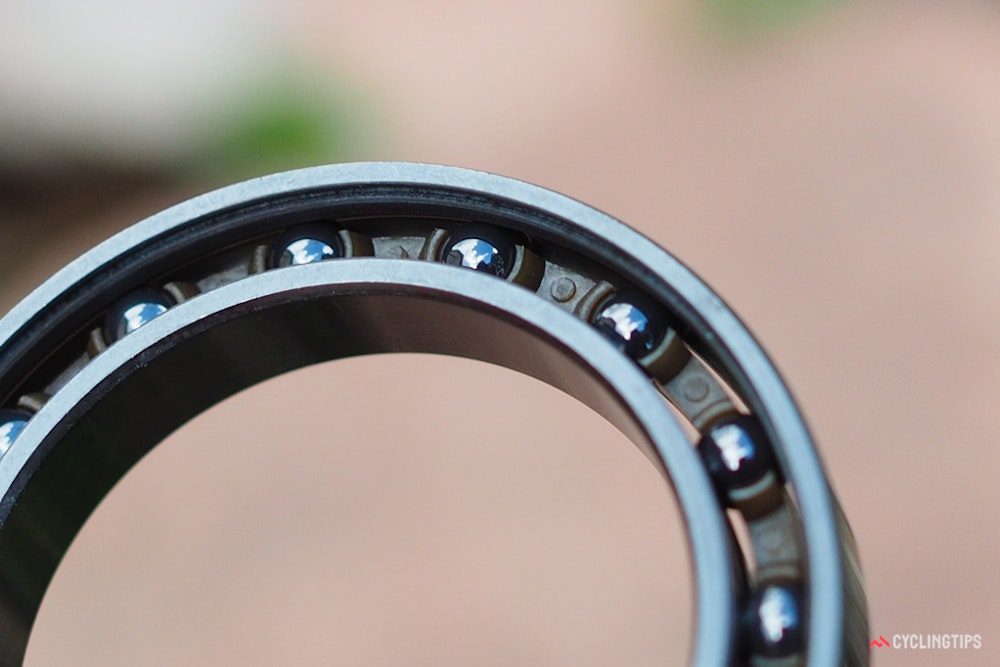
As cost of the wheelset goes up so do the quality of components used. In the case of bearings inside the hub, they typically go from steel to ceramic. A good ceramic bearing is rounder, smoother and harder than an equivalent steel bearing, therefore reducing friction and improving performance as a result. However, a good steel bearing will typically outlast and outperform a cheap ceramic bearing.
As well as the material of the bearings, proper lubrication will influence how they roll and the amount of friction that is produced. Friction in the bearings reduces performance and slows the wheels down. Excessive friction occurs if the bearings aren't appropriately lubricated, if debris or other substances get into the bearings, or if the bearings are flushed of their lubricant by high pressure washes. Here, higher quality hubs offer improved sealing from the elements, which keeps them rolling smoother, for longer.
The lower the viscosity of the lubricant, the less friction, but durability may be compromised as a result.
Bearings are either cartridge (sealed) or loose ball (cup and cone). The cartridge or sealed system features an inner and outer race, with the bearings sitting in between them, all enclosed within a single unit. The cartridge bearing is then pressed into the hub shell with the axle going through the middle. A sealed bearing is a single unit, if it wears out, replacement of the whole cartridge is required, but fairly cheap to do so.
Loose ball or cup and cone bearings are most commonly found on Shimano products and entry-level wheels. Cup and cone bearings have multiple pieces and loose bearings. They are not enclosed like cartridge bearings, instead loose ball bearings are sandwiched between a fixed outer race (usually part of the hub shell), with an adjustable cone shaped inner race threaded onto the axle. If the bearings are worn too far, they can wear the hub surfaces causing enough damage to require replacement of the hub, on the positive, they're easy to maintain to prevent this from happening.
Tyre types
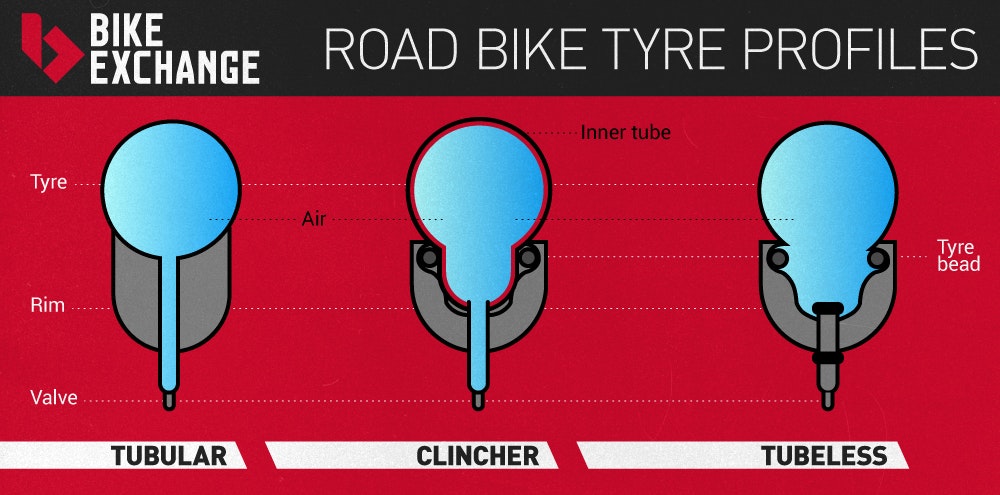
It's worth knowing the three different tyre types that fit onto a wheel as they require a specific rim. Tyres will either be 'clincher', 'tubular' or 'tubeless' and the wheel will specify which tyre it is compatible with. The majority of road bikes available for sale will feature clincher tyres which need an inner tube to hold air.
Clincher
The most common form of tyre currently used on road bikes. Unless it is stated, it's a fair assumption that any new bike bought will feature clincher tyres. Clincher tyres require a tube to inflate and hold air, while the tyre will feature either a steel or kevler fiber bead on it's edge to hold it in the rim.
Tubular
Tubulars also use an inner tube but in a very different way. The inner tube of a tubular tyre is sewn directly to the tyre, which is then glued or stuck directly onto the rim. Professional racers almost exclusively use tubular tyres thanks to their reduced weight, enhanced rolling resistance and road feel.
The drawback to tubular tyres is the extensive work it takes to first apply the tyre to the rim and the laborious task of replacing the tyre should you get a flat. Certainly an item best kept for the dedicated racer.
Tubeless
Tubeless tyres have long been used in mountain biking and are slowly making their way into the road bike world. Trek has equiped ‘tubeless ready’ rims on the majority of its road bikes since 2015 and Giant recently announced details of their 2017 TCR, TCR disc, Propel and Defy road range which exclusively features tubeless tyres on high-end models.
As the name suggests, tubeless tyres require no inner tube, and instead attach to a specific rim design that creates an airtight seal. It's a technology very similar to that found in modern cars and motorbikes.
Tubeless tyres are considered superior to clincher tyres because they create less friction which improves rolling resistance, can be run at a lower pressure improving comfort, and are said to offer better puncture protection. To prevent punctures, tubeless tyres can be used with liquid sealant which can be inserted into the tyre to help immediately seal small punctures if they occur.
Factory vs hand built
Although technically many 'factory built' wheels are built by hand, the characteristics of each wheel set are very different.
Factory built wheels are mass produced to exact specifications and very often have proprietary spoke and rim designs. They are designed to be bought off the shelf or paired with a manufacturer's bike. Extensive research, development and marketing means these wheels dominate this space. Examples of these includes wheels from Shimano, Mavic, Fulcrum and SRAM.
Conversely, hand built wheels are unique, featuring individual hubs, spokes, nipples and rims that are made to order. Hand built wheels are custom creations to suit a riders exact needs.
Wheel maintenance
'True' wheels: True refers to your wheel tracking in a straight line without deviation. If your wheel is out of true it may rub on your brakes or negatively effect the bikes handling. Adjusting spoke tension is a process to true your wheel that any local bike shop can do.
Change your brake pads: Worn brake pads will reduce braking performance and could potential damage your rims, or yourself if they fail to work. Changing your brake pads is a simple procedure on most bikes that you can do yourself with a small allen key and a new set of brake pads.
Clean your bearings: Your hub bearings may need to be cleaned out and repacked with grease on a semi-regular basis. The exact time frame will depend on the quality of your hubs, how much you ride and the conditions you ride in. Unless you are proficient with bike maintenance this is one job probably best left with your local bike shop, but be sure to mention it to them when you take it in for its regular service if you think it may be effecting your wheels performance.
Inspect the rim: Every time you brake with rim brakes the rim wears. This friction will eventually cause thinning in the rim, which, if left unattended to could weaken the structural integrity of the wheel. To avoid this, regularly inspect the rim to check for any clear grooving and keep an eye on the rim wear indicators that are usually either a small hole or groove in the rim to show how much material remains.
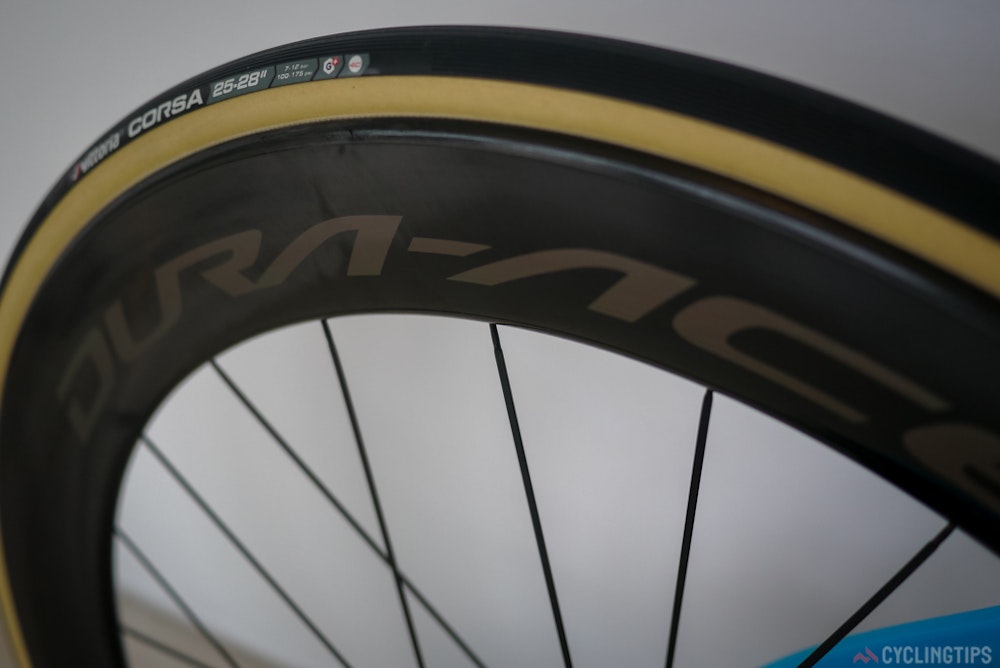
We hope this guide has been helpful and provided some valuable information. You can browse BikeExchange for road bike wheels or search for your local bike shop to get further assistance. Also check out our ultimate guide to buying a road bike for an even more detailed breakdown of what you should be looking for when buying a bike.





